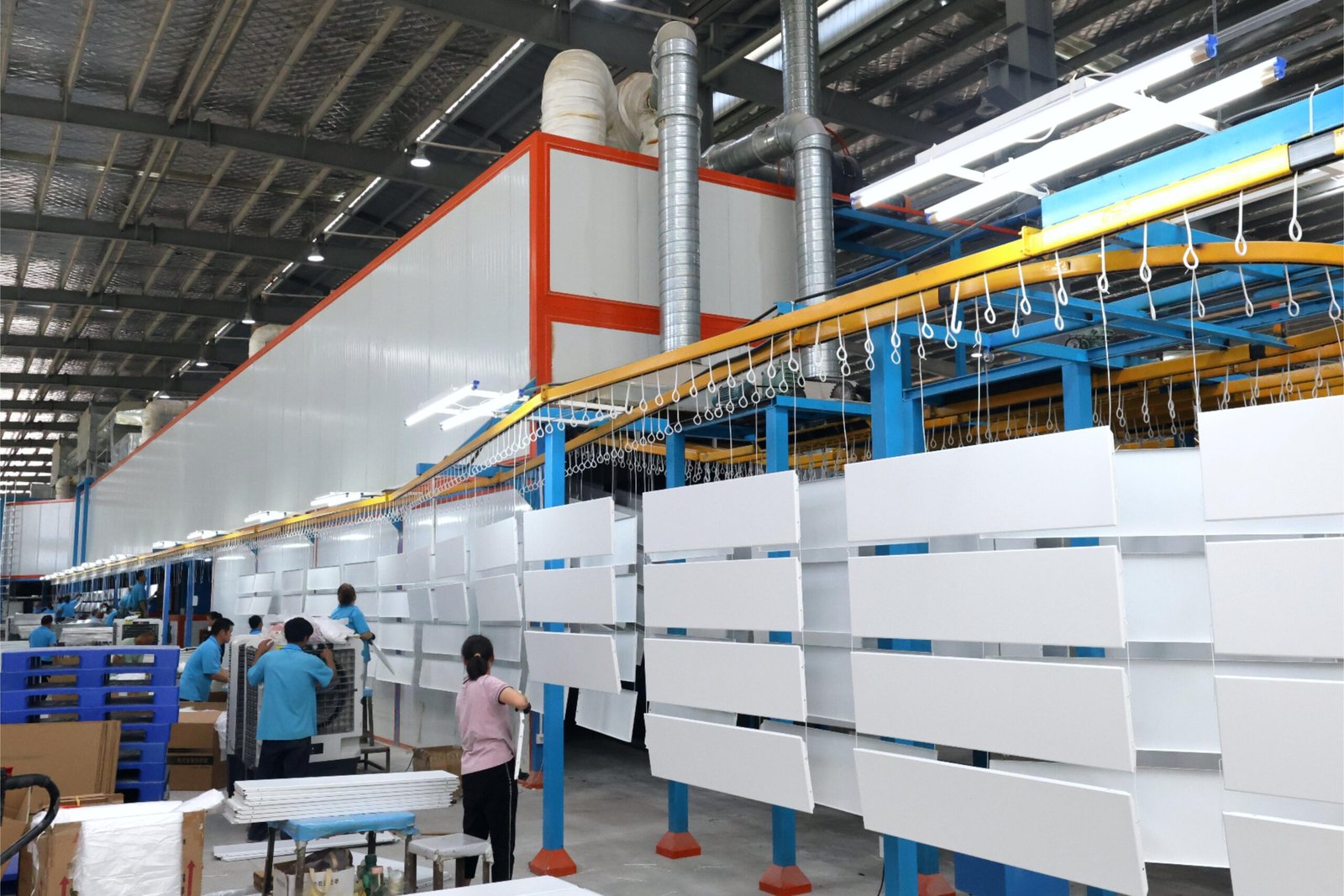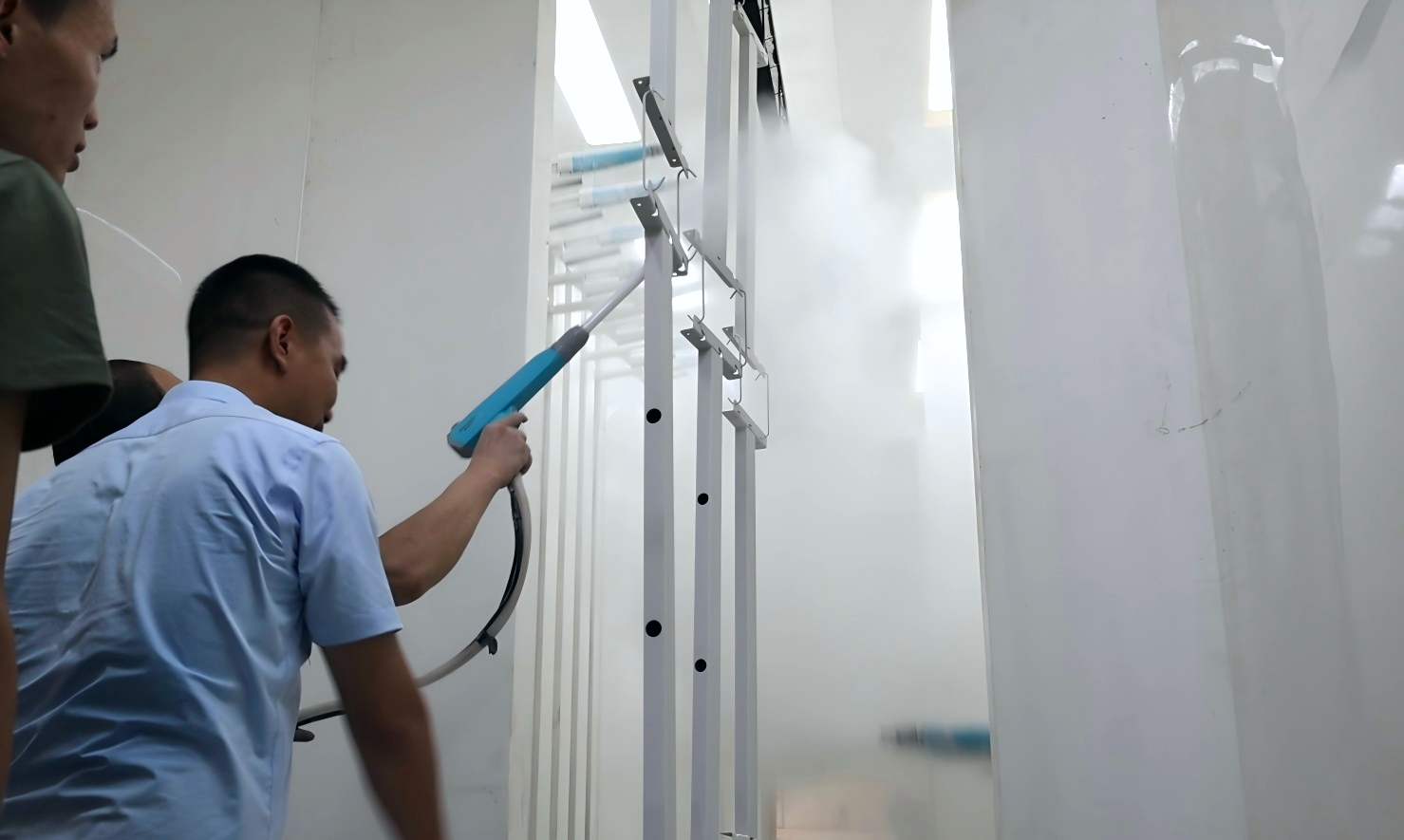
Powder coating is a widely used finishing process that provides durability, corrosion resistance, and aesthetic appeal. But what materials are used in powder coating?
Powder coating materials consist of polymer resins, pigments, curing agents, and additives. These materials can be categorized into thermoplastic and thermoset powders, each offering distinct advantages based on application needs.
Understanding the composition of powder coatings helps in selecting the right type for specific applications.
1. Types of Powder Coating Materials
Powder coatings fall into two main categories: thermoplastic and thermoset powders.
Thermoplastic Powder Coatings
- Can be melted and reshaped multiple times.
- Provide a thicker, durable coating without becoming brittle.
- Best for applications requiring flexibility and reusability.
Common Thermoplastic Powder Coating Materials
| Material | Properties | Common Uses |
|---|---|---|
| Polyethylene (PE) | Chemical-resistant, impact-resistant | Wire coatings, pipelines, outdoor furniture |
| Polyvinyl Chloride (PVC) | Flexible, corrosion-resistant | Handrails, electrical insulation, food-grade applications |
| Nylon | Wear-resistant, low friction | Gears, conveyor belts, kitchen utensils |
| Polyolefin | Smooth finish, excellent adhesion | Lab equipment, chemical-resistant surfaces |
| Fluoropolymers (FEVE, PVDF) | UV-resistant, weatherproof | Architectural applications, outdoor structures |
Thermoset Powder Coatings
- Undergo a permanent chemical change during curing.
- Provide high heat resistance and superior durability.
- Ideal for applications exposed to extreme temperatures and harsh environments.

Common Thermoset Powder Coating Materials
| Material | Properties | Common Uses |
|---|---|---|
| Epoxy | Strong adhesion, chemical resistance | Indoor metal surfaces, primers |
| Polyester | UV-resistant, durable | Automotive parts, outdoor furniture |
| Epoxy-Polyester Hybrid | Better weather resistance than pure epoxy | Home appliances, office furniture |
| Polyurethane | Smooth finish, excellent corrosion resistance | Industrial machinery, outdoor coatings |
| Acrylic | High gloss, UV-resistant | Automotive parts, high-end decorative coatings |
| Silicone-Based Powders | High-temperature resistance (up to 1,000°F) | Exhaust systems, engine components |
2. Key Ingredients in Powder Coating Formulations
In addition to the base polymer, powder coatings contain other components to enhance performance and appearance.
1. Pigments
- Provide color and opacity.
- Common types include:
- Titanium dioxide (white)
- Iron oxides (red, yellow, brown)
- Carbon black
2. Curing Agents
- Help cross-link the polymer to form a hard, durable finish.
- Epoxy coatings use amine curing agents.
- Polyester coatings use TGIC or HAA as curing agents.
3. Additives
- Flow Modifiers: Improve smoothness and reduce surface defects.
- Gloss Control Agents: Adjust the finish from matte to high gloss.
- Texturing Agents: Create surface effects like sand, wrinkle, or hammered finishes.
3. Selecting the Right Powder Coating Material
When choosing a powder coating material, consider:
- Durability Needs: Use epoxy for chemical resistance, polyester for outdoor applications.
- Environmental Factors: Select UV-resistant materials for exterior exposure.
- Aesthetic Requirements: Acrylics for high gloss; use additives for texture or unique finishes.
Conclusion
Powder coating materials vary based on their chemical composition and intended use. Thermoplastics provide flexibility and reusability, while thermosets offer superior durability and heat resistance. Understanding these materials ensures the right selection for any coating application.
